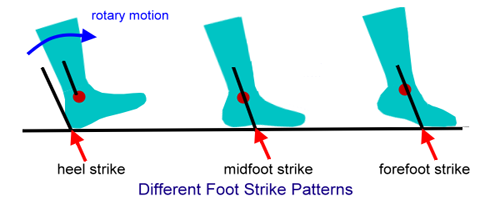Have you ever experienced an injury from running? As running gained popularity since the 1970’s, running related injuries have also reached an all-time high. Novice and female runners are the two groups that are at the greatest risk of these injuries- so we wanted to learn more about these injuries and how to help prevent them.
Dr. Chris Napier conducted a study on retraining running form in order to reduce injury risk, and talked about his results as part of the LadySport Lecture Series. A couple of the trainers of Le Physique attended and want to share with you what we learned!
1. Risk Factors
In a previous study of his, Napier found that the greatest indication of running related injuries,was a runner’s peak braking force– the maximum posterior force (opposite the runner’s direction of travel). This came as a surprise to Napier and his team, as they expected the main risk factor to be a runner’s vertical loading rate. With this information, Napier had runners run on a treadmill while getting real-time feedback on the levels of their peak braking force, allowing runners to try different techniques in order to reduce their peak braking force. Read on to find out these different techniques!
2. Foot Strike Form
If you’ve ever tried to change up your running form to reduce injuries, you may have considered your foot strike form. Napier found that foot strike form does have an impact on reducing peak braking force. Participants tried rearfoot, midfoot, and forefoot strikes, and the biggest difference on peak braking force due to foot strike form was made when participants started to transition away from a rearfoot striking pattern.

3. Step Length and Frequency
As runners explored different techniques in order to reduce their peak braking force, the greatest change in their running technique was their step length. By reducing their stride length, their frequency of steps also increased, and their steps were closer to the runner’s centre of mass. This also helped to make their running ‘lighter’- and resulted in a significant decrease in their peak braking force.
Running related injury risk was significantly reduced in the participants of this study, and these techniques became part of the runners’ natural gait as well.
So there you have it! In order to reduce your risk of running related injuries, it is recommended to reduce your step length, increase your step frequency, and ‘think light’. We recommend using a metronome app to assist with transitioning towards short, more frequent strides. Which techniques help you the most when it comes to reducing running injuries? Share them with us in the comments!
 Mika Fogelman- Client Care Manager
Mika Fogelman- Client Care Manager
Mika is passionate about helping others in any way she can. Having danced since she was five years old, she discovered excitement for fitness through teaching Zumba dance fitness classes, and loves to help others develop their confidence through exercise.







